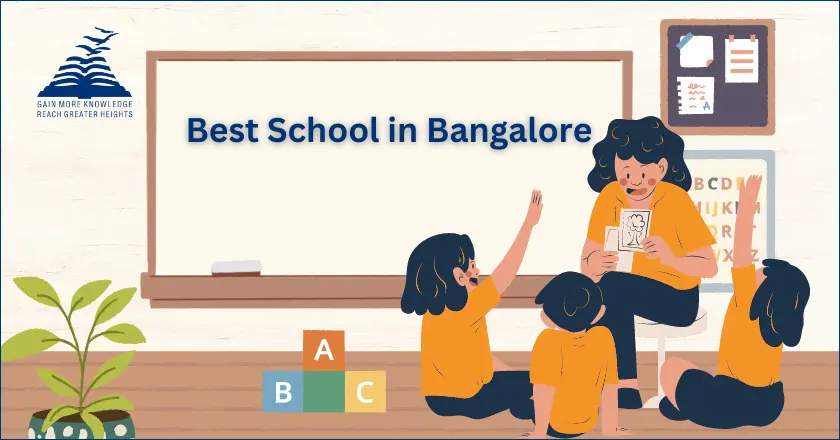Effective classroom management plays a vital role in cultivating a learning-friendly atmosphere. Few things are more disheartening than a student’s disruptive behaviour derailing an entire lesson plan. While it may be tempting to tackle such behaviours head-on with punishments and admonishments, this approach only highlights the unwanted conduct unnecessarily. Moreover, it can trigger additional disruptions and hinder the development of trust and respect among students. Employing positive reinforcement, on the other hand, proves to be a superior method for upholding discipline and fostering an environment conducive to learning.
In the following section, we will explore why this approach is effective and provide practical ways to incorporate it into your classroom management strategies.
The Power of Positive Reinforcement
Positive reinforcement is a powerful tool that can improve student behaviour and engagement in the classroom. When students receive praise, recognition, or rewards for positive actions, they are more likely to repeat those behaviours in the future. This helps to create a positive cycle of success where students feel motivated and invested in their own learning. One way teachers can implement positive reinforcement is by setting specific goals or expectations for their students. These goals should be attainable and realistic so that students can experience success early on. For example, a teacher might set a goal for every student to participate at least once during class discussions.
Positive reinforcement is an effective strategy that promotes good behaviour while building confidence and motivation among students. With consistent implementation and support from educators, it has the potential to transform classrooms into welcoming environments where all students feel valued and respected.
Getting Students Involved in the Process
Getting students involved in the process of promoting positive behaviour is a great way to ensure that they take ownership of their actions. One effective approach is to have students participate in creating classroom rules and expectations. This can be done through brainstorming sessions where students share their ideas and suggestions. Involvement in the process is achieved by providing them with opportunities for leadership roles within the class. This could include assigning a student leader for each activity or task or allowing them to lead group discussions on certain topics.
It’s also essential to provide continuous feedback and reinforcement when good behaviour is exhibited. Recognising and acknowledging positive behaviour helps build self-esteem, encourages repetition of positive actions, and reinforces desired behaviours. Incorporating games and activities into learning can also be an exciting way for students to get involved in promoting positive behaviour. These types of activities allow everyone to work together as a team towards common goals, thereby encouraging cooperation amongst peers.
Ultimately, getting students involved in promoting healthy behaviour not only increases accountability but also creates a sense of unity within the classroom setting. It enables every child’s voice to be heard while fostering collaboration among children from different backgrounds who may have varying views on what constitutes acceptable behaviour at school.
Ways on How to Improve Student behaviour in the Classroom
Improving student behaviour in the classroom can be a challenge, but it’s an essential part of creating a positive learning environment. Here are some creative ways to help you achieve that goal.
- One way is to establish clear expectations for behaviour from the very beginning. This means outlining what is and isn’t acceptable in terms of conduct, as well as any consequences for breaking these rules.
- Another strategy is to use positive reinforcement regularly. Encourage good behaviour by praising students when they demonstrate it, whether through verbal recognition or small rewards like stickers or other incentives.
- Consider implementing group projects and collaborative activities that require students to work together towards common goals. This helps build teamwork skills while also fostering mutual respect and understanding among peers.
- It’s also important to address negative behaviours quickly and fairly. When incidents arise, deal with them calmly but firmly, using established consequences as needed.
Make sure you’re setting a good example for yourself! Be respectful towards your students at all times and model appropriate behaviours whenever possible.
Promoting a Positive Classroom Atmosphere
Creating a positive classroom atmosphere is essential to promoting good behaviour among students. It’s important for teachers to create an environment where everyone feels valued and respected. This can be done through various methods, such as setting clear expectations, practising effective communication, and building relationships with each student.
- By incorporating team-building activities into the curriculum. These types of activities encourage collaboration and help build trust among classmates. For example, teachers can assign group projects or have students work in pairs on assignments that require them to communicate effectively with one another.
- By creating a safe space for students to express themselves freely without fear of judgement or ridicule. Teachers can do this by actively listening to their students’ concerns and providing guidance when necessary. Additionally, implementing restorative justice practices can help resolve conflicts peacefully and encourage empathy among students.
Promoting a positive classroom atmosphere requires effort from both the teacher and the students. By working together towards this goal, classrooms can become more welcoming environments where learning thrives!
Conclusion
Promoting positive student behaviour is a crucial aspect of creating a successful learning environment. By implementing effective strategies such as using positive reinforcement, involving students in the process, and promoting a positive classroom atmosphere, teachers can encourage their students to behave appropriately and achieve academic success.
It’s important to remember that every student is unique and responds differently to various approaches. Therefore, it’s essential for educators to continuously assess their methods and adjust them accordingly.
By consistently utilising these creative ways to promote positive student behaviour in the classroom, teachers will not only be able to manage disruptive behaviours more effectively but also create an environment where all students feel valued and supported on their educational journey. Ultimately, leading schools in Bangalore will become one of the best schools with exemplary education standards across India.






